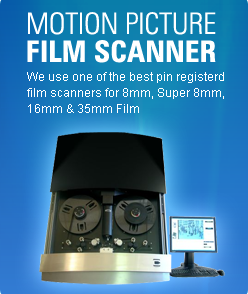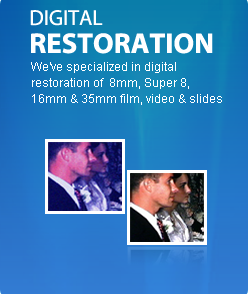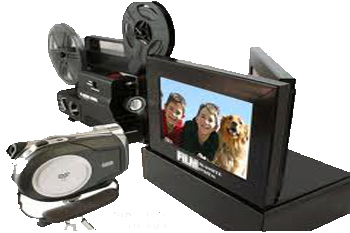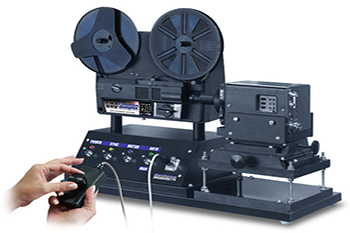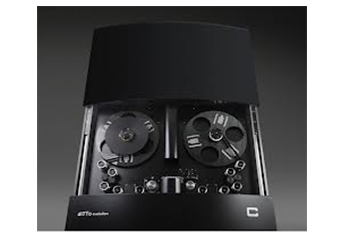
Film Conversion Equipment
Film Scanning and Film Transfer Equipment Types
The type of film scanning machine used for your 8mm, Super 8 or 16mm film conversion will have as much of an impact on the quality you receive as the resolution of the scan itself will. For example, if you wanted to digitize a photograph and tried doing it two different ways. You first put the photograph down on a table and took a picture of it using your smart phone or camera. Then you took the picture and scanned it using a flatbed scanner. If you compare the two side by side on your computer it will become really obvious that the flatbed scanner produced a digital image as good as the photograph. However, the picture you took with your phone or camera does not look close to the quality of the original photograph.
The same goes for scanning your 8mm, Super 8 or 16mm film. The real-time and frame by frame machines below are using a camcorder to take a picture of your film. The motion picture film scanner and Datacine machine are scanning the film. The results will be significantly different.
Film Conversion Equipment |
|
Real Time
|
|
Frame by Frame
|
|
Professional Film Scanners
|
|
So, at this point you’ve learned that film transfers can capture at standard definition (480 lines), high definition (1080 lines) or 2K (1556 lines). You’ve also learned about the 3 different types of film transfers being used today. In order from least to best quality we have:
The film transfer processes above are the basics types and do not include any restoration by themselves. Restoration comes in many different capabilities from color and exposure correction, to grain elimination, to stabilization
New Britain Fun Facts: New Britain is home to Central Connecticut State University (CCSU) and Charter Oak State College. Incorporated as a city in 1871, New Britain saw its industrial identity defined in the late 19th century when Frederick Stanley incorporated The Stanley Works and was soon followed by Corbin Locks and other major manufacturers. By the early 20th century, New Britain became known as the "Hardware City", having become America's largest hardware manufacturing center. Still the home of the Stanley Works, New Britain today retains its economic focus on manufacturing but supplements it with an eye towards technology.
Connecticut Fun Facts: In area it is the third smallest U.S. state, but it ranks among the most densely populated. The state’s greatest east-west length is about 110 miles, and its maximum north-south extent is about 70 miles. Connecticut takes its name from an Algonquian word meaning “land on the long tidal river.” “Nutmeg State,” “Constitution State” and “Land of Steady Habits” are all nicknames that have been applied to Connecticut.
